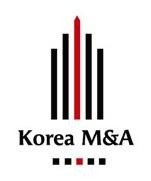| 일 | 월 | 화 | 수 | 목 | 금 | 토 |
|---|---|---|---|---|---|---|
| 1 | 2 | |||||
| 3 | 4 | 5 | 6 | 7 | 8 | 9 |
| 10 | 11 | 12 | 13 | 14 | 15 | 16 |
| 17 | 18 | 19 | 20 | 21 | 22 | 23 |
| 24 | 25 | 26 | 27 | 28 | 29 | 30 |
- acquisition
- nda
- LOTTE
- Bank
- Merger
- Investment
- CA
- Letter of intent
- securities
- LOI
- Japan
- M&A
- Japan Tobacco
- China Construction Bank
- OTCBB
- Confidential Agreement
- Acquistion
- private equity
- Malaysia
- cgi korea
- Korea
- PEF
- hong kong
- China
- Korea M&A
- sk
- taiwan
- case study
- capital gate
- buyout
- Today
- Total
Korea M&A Corporation
Foreign Investment in South Korea The matters pertaining to a foreign individual or entity wising to make a direct foreign investment in Korea are primarily prescribed by the Foreign Investment Promotion Act (“FIPA? and the Commercial Code of Korea. This document attempts to give an overview of procedure for foreign investment. Brief introduction of FIPA Investing in Korea has been facilitated b..
In Korea, unfair trade practices and anti-competitive behavior of enterprises are regulated under Monopoly Regulation and Fair Trade Act (“MRFTA?, which was enacted on December 31, 1980 and which have underwent several revisions since its enactment. Article 1 of MRFTA sets forth the purpose of the Act as preventing the abuse of market dominance and excessive concentration of economic power in en..
Korean Labor Law Korean Labor law issues are often the ones which any foreign investor conducting business in Korean market has most difficulty in understanding. We set forth below certain basic concepts of Korean labor law requirements. The basic law in Korea regulating labor standards is the Labor Standards Act (LSA), which is applicable to an employer with at least 5 employees. LSA was substa..
The Sarbanes-Oxley Act of 2002 (Pub. L. No. 107-204, 116 Stat. 745, also known as the Public Company Accounting Reform and Investor Protection Act of 2002 and commonly called SOX or SarbOx; July 30, 2002) is a United States federal law passed in response to a number of major corporate and accounting scandals involving prominent companies in the United States. These scandals resulted in a decline..
Statement of Covenant Date:________________ In consideration of services concerning the recent investment proposal, provided by Mr. Lee, Esq. with a primary residence in 14 South Joyce St., #10, Arlington VA 22, USA (hereinafter denoted “Mr. Lee”), the undersigned hereby covenants as follows with an intent to assume full legal responsibility. The undersigned shall not use or disclose any confide..
Reverse Merger with US Public Companies – Case Study Typically, a reverse merger is a merger between a private company and a publicly traded company. The public company issues stocks to the shareholders of the private company to acquire the ownership of the private company. The amount of the shares received by the shareholders of the private company enable them to become the majority shareholder..
Securities Law of the People's Republic of China (Adopted at the 6th Meeting of the Standing Committee of the Ninth National People's Congress on December 29, 1998)ContentsChapter I General Provisions Chapter II Issuing of Securities Chapter III Trading of Securities Chapter IV Takeover of Listed Companies Chapter V Stock Exchanges Chapter VI Securities Companies Chapter VIII Securities Registra..
SUMMARY OF SIGNIFICANT DIFFERENCES BETWEEN KOREAN GAAP AND U.S. GAAP In many respects, Korean GAAP are substantially the same as U.S. GAAP. However, there are certain significant differences between Korean GAAP and U.S. GAAP which are summarized below. This summary should not be taken as exhaustive of all Korean/U.S. GAAP differences. No attempt has been made to identify all disclosure, presenta..
